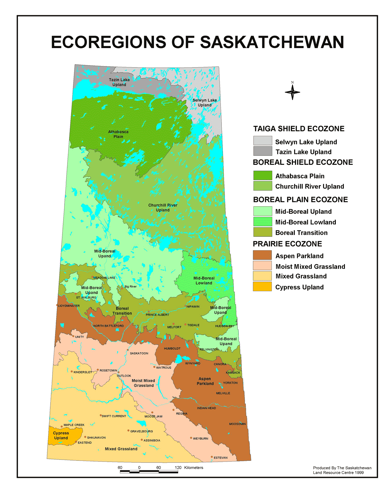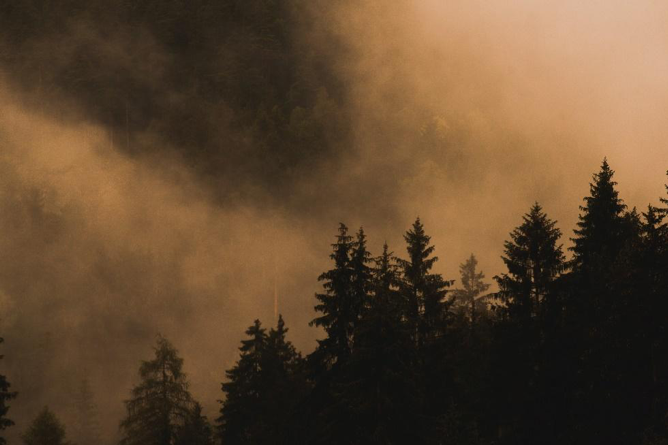By Caitlyn Anhorn
In a time when much of our lives are influenced by the media we consume and the things we own, it is refreshing to recall that we are part of a planet that is bigger than just us. To this exact point, there is no stronger reminder of our connection to the planet than that which is felt in nature. For those in Saskatchewan, that might mean the boreal forest.
In Saskatchewan’s north, over 100 million acres of large trees move with the wind, stand tall in the sun, and provide homes to many critters and people alike. This is Saskatchewan’s boreal forest; home to more than 50 Indigenous communities and the storage of approximately 5 billion tonnes of carbon.
Before settlers made their mark on the land, large forest fires swept the land about once every 50 to 100 years or so, while smaller fires happened every 1 to 25 years. With a landscape this large and unique, it is no wonder that the forest requires special management for its long-term health.
Forest Fires are Crucial for Forest Renewal
Forest fires are an important means to “reset” a forest, a natural cycle that involves rejuvenation. Forest fires help get rid of the dead vegetation, allowing the sun once again to reach the soil and initiate the new growth of freshly exposed spruce or pine seedlings.
Though forest fires are a natural process, decades of fire suppression and climate change have contributed to an ecosystem where fires no longer burn naturally. Instead, they burn hotter over a wider distance, posing a significant threat to communities and wildlife alike. Management of boreal forests in a safe and sustainable way is becoming ever-increasingly difficult to surmount.
Climate Change is Everywhere
We are living during one of the greatest threats to humanity and the environment that the planet has ever seen. Climate change impacts are well documented and far-reaching, even in Saskatchewan.
While some areas in Saskatchewan’s boreal regions are prone to seasonal flooding from rain and snowmelt, others are susceptible to incredible drought. Though some places experience larger and more frequent flooding, they are matched by other areas that go through more intense fires.



Fires in the Amazon, California, and Australia are a devastating reminder of the severe damage that has been caused in recent years. These fires are more intense than ever and continue to destroy habitat and displace whole communities. With all this land being burned on a significant global scale, it raises the question: what are all of these fires doing to our global carbon emissions?



Forest Fires and Carbon Emissions
We all know that forests store immense amounts of carbon. When trees store (sequester) carbon, they contribute towards the overall atmospheric system that must remain in balance for all living creatures to survive. Stored carbon is then released (or emitted) when the trees burn in a fire. When carbon is released, it enters the atmosphere, raising carbon dioxide (CO2) levels. Excess CO2 in the atmosphere is part of what drives climate change.
A recent study based out of the Northern Arizona University (lead author Xantha Walker) outlines important concepts that need to be considered when calculating carbon emissions of a forest fire. As fire intensities continue to increase due to climate change, tracking carbon emissions is important so that the proper action and forest management can be taken in the future.
Michelle Mack (senior author of the study) says that in general, carbon emissions from fires have only been tracked for about a decade. During this time, scientists have typically used the Fire Weather Index (FWI) as calculated using various indices that measure temperature, rain, wind, and relative humidity. Like scientists, most people also think about these weather conditions when they think about climate change and forest fire severity. However, what else must be considered in determining a forest fire’s carbon emissions?
What fuels the fire and their carbon emissions?
While fire weather has been important in predicting carbon emissions for the past decade, Walker’s study suggests that vegetation and its associated soils are accurate predictors of carbon emitted during a fire.
Science Daily summarizes the study’s findings, “The amount of carbon stored in soils was the biggest predictor of how much carbon would combust, and that soil moisture was also significant in predicting carbon release.”
So then, what contributes to carbon in the soil? The study found that soil’s moisture, the specific tree species, and the age of forest stand all contribute to the amount of carbon that is released during a fire. It is not simply the tree species that dictate this. For example, jack pine and deciduous trees grow in relatively shallow organic soils, in mostly dry and warm areas. These trees tend to emit less carbon when they are burned.
At the same time, black spruce is very flammable and grows in deep organic soils, mostly in poorly-drained areas, and after 80 to 150 years since the last fire. The study found that black spruce is generally a good predictor of increased carbon emissions.
As fires happen more regularly due to climate change, black spruce do not grow as much and are replaced by jack pine and deciduous trees. This is good in the sense that jack pine and deciduous trees emit less carbon when burned, as previously mentioned. However, black spruce forests are important to many species for survival, such as the woodland caribou, who are a threatened species.



Fire in the Future
As we move into the future and the planet continues to warm through climate change, it’s reasonable to expect that there will be less time between fires. This means that jack pine and deciduous trees will continue to replace black spruce, keeping it from the time that it needs to grow before the next fire comes through.
Mack suggests that this new information about vegetation fuels should be incorporated into fire emissions models. Marc-André Parisien (co-author of the study) says that “this helps us know what targeted actions, such as fire management or modifying forest vegetation, we can take to limit carbon loss.”
Limiting forests’ carbon loss during fires is important as atmospheric carbon balance targets are federal goals that must be strived for. As we continue to manage our forests, these new findings should be considered to help reduce forest fire carbon emissions.
Including Indigenous Peoples in the Conversation
Impacts of climate change tend to disproportionately affect populations who don’t always have access to the support that they need to mitigate extreme weather events. In Saskatchewan, Indigenous Peoples tend to be disproportionately affected by forest fires, considering there are more than 50 Indigenous communities within the Saskatchewan boreal forest alone.
Now more than ever, incorporating Indigenous-led Nature-based solutions should be at the forefront of fire management conversations. Indigenous knowledge of fire management can help achieve increased carbon sequestration and therefore help fight against climate change.
Moving forward, it is each and everyone’s responsibility to address the gap between minorities who are disproportionately impacted by fires and their vested interest in better management regimes.
Putting Knowledge to Good Use
Climate change, forest fires, and carbon emissions are interconnected. While forest fires are important, their severity has increased as a result of climate change. As fires increase, it is important to include the below-ground carbon storage in the carbon emission models and in future fire management discussions that include Indigenous Peoples.
You may be asking yourself, “How can I get involved?” First and foremost, explore the rest of our website to learn more about the various campaigns that CPAWS is involved in and how you can play your part.
One campaign works towards protecting woodland caribou. Many First Nations depend on subsistence hunting of caribou as a form of food security. Not only that, but caribou rely on non-fragmented forest to avoid predators, therefore harvest patterns must reflect this.
CPAWS-SK and other ENGOs engage regularly in consultation between First Nations groups and industry partners to ensure that sustainable management of the Saskatchewan boreal forest is made a reality. Organizations like Mistik Forest Management are SFM certified and make it part of their sophisticated harvest patterns to take into account the potential for future fires and the need for maintaining high-quality woodland caribou habitat in long, unbroken tracts across the majority of our province’s forest.
